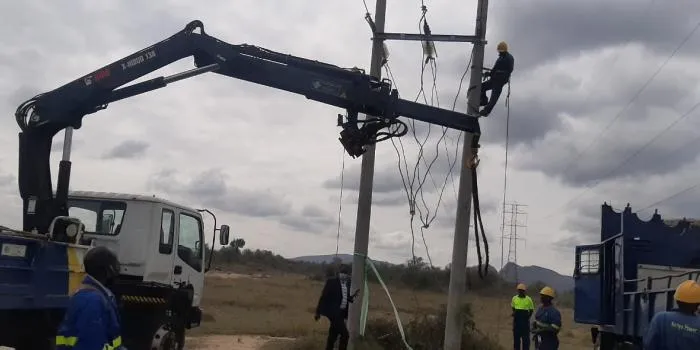Kenya Power staff working on electricity lines at Soysambu Conservancy on February 22, 2021 Kenya Power, formerly Kenya Power and Lighting Company (KPLC) , has cautioned Kenyans against conmen who are creating frequent blackouts to scam unsuspecting customers.
In a statement dated Tuesday, April 5, the power distributor revealed that the swindlers often created a short circuit resulting in a blackout before demanding a fee from the affected customers with the promise of restoring the power.
The conmen are so daring that they hang around transformers to ensure that they are on location to destroy them immediately after repairs. Kenya Power explained that the conmen often tamper with fuses causing the blackouts. Kenya Power building in Nairobi CBD.File "Kenya Power has noted a growing trend of third party interference with our network, by way of maliciously shorting wires to cause blackouts. The perpetrators then solicit money from our customers in order to restore supply.
"Criminals further sabotage efforts to restore supply by our emergency teams as they remove fuses from the newly replaced transformers, immediately our teams leave the site in a bid to increase frustration on our customers so that they can yield to their demands," cautioned Kenya Power.
Residents of Gatanga Constituency in Murang’a County have been some of the most affected following increased cases of transformer vandalism.
The resident complained of a disruption in their social and economic activities with increased insecurity at night, and inability to charge their phones for mobile money transactions.
In recent months, the monopolistic power distributor has seen major changes that have shaken-up the leadership and seen the cost of power reduce significantly.
In January 2022, the country experienced a nationwide blackout after the collapse of a tower at the Kiambere – Embakasi power line.
It was later established that the blackout was work of sabotage involving some high-ranking officials within company in protest of the changes made at the helm.
Towards the end of March, Energy Cabinet Secretary, Monica Juma, and key stakeholders from the power sector also held a series of extensive talks with an aim of lowering the cost of electricity. Kenya Power workers repair a transformer on the Meru-Makutano road on March 28, 2016. File
